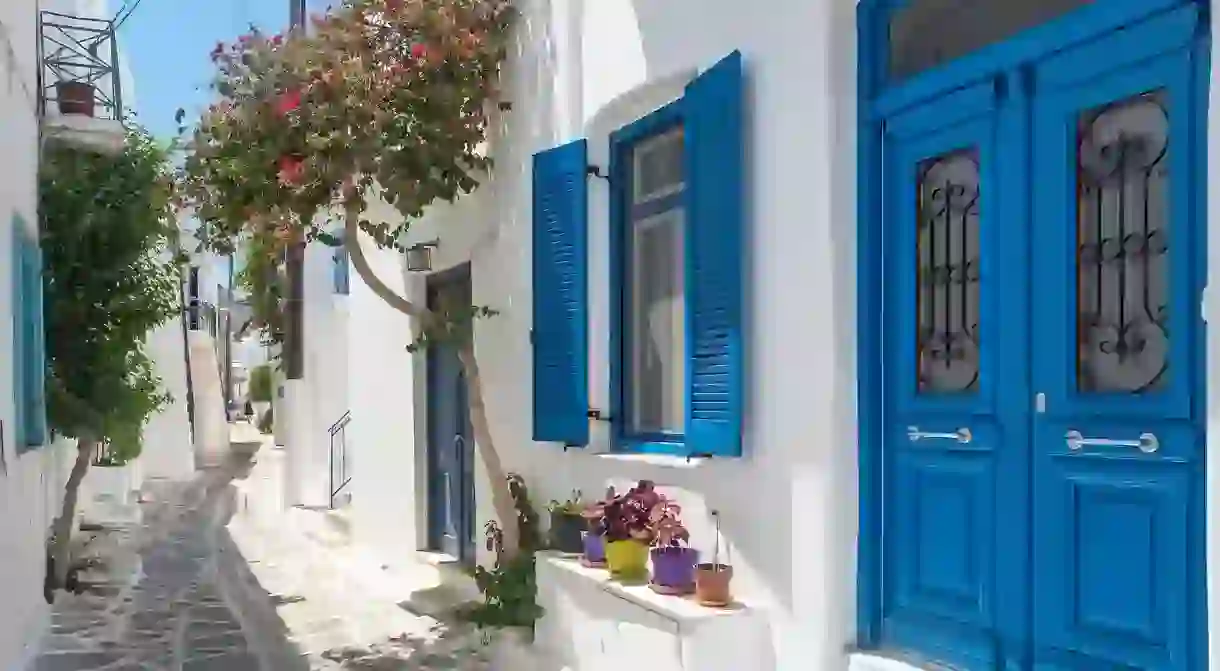Why Are Buildings in the Cyclades Painted Blue and White?

Stark white houses, painted with bright blue doors and windows, are an enduring image of the Cyclades islands. But why are Greece’s white buildings painted in this style? Read on to discover the history behind this well-known architectural colour palette.
Explore the Cyclades by hiring a boat for the day through SamBoat. Alternatively, set sail on a week-long sailing adventure with Dream Yacht Charter.
While many people consider the blue-and-white buildings to be emblematic of Greek architecture, this trend is much more prevalent in the Cycladic islands than anywhere else. Each island has retained some cultural trademarks. For instance, Tinos has a prevalence of marble in its architecture, while Milos abounds in houses with a typical first-floor garage to store the boats come wintertime. However, they are all united by their white walls with blue doors and windows that attract visitors from all over the globe, drawn to their minimalist beauty. While some believe it is linked to the superstition that blue wards off evil, just like the blue on the evil eye symbol, it seems there are several reasons behind this eye-catching colour palette.

Many of the Greek islands are barren with very few trees. Given the lack of wood, locals used stone, mud and even a kind of volcanic cement to build their houses. The resulting facades weren’t the prettiest. As a result, it was customary to paint the houses with natural dyes to embellish them.

However, there is another possible reason behind the striking colour scheme – some believe it came through the orders of Ioannis Metaxas, former military general and dictator. In the 1930s, he imposed the use of lime, a local product with antibacterial properties, to whitewash the buildings in an attempt to fight the epidemics that were ravaging the islands. The use of lime had the double advantage of not only preventing infections but also offering insulation from the sun, preventing houses from getting too warm, especially in the hot summers.

However, this practice slowly died out after his passing, and locals returned to the old habits of painting their homes the colours they saw fit. It was only during the military dictatorship of 1967 that the whitewashing of the houses and buildings was re-imposed, as a sign of patriotism, in accordance with the colours of the Greek flag. The trend continued even after the coup of 1973, although to a lesser degree. This explains why some villages, such as those in Santorini, still feature houses with different colours.

Today, the reason why the white colour endures is a mystery that historians are still trying to solve. But whatever the reason, there is no doubt that the white of the houses, combined with the blue of the Aegean Sea, form an idyllic sight that we will never get tired of.
Set your compass for the Cyclades islands by chartering a yacht through SamBoat, or book a multi-day sailing holiday with Dream Yacht Charter – skipper included.













